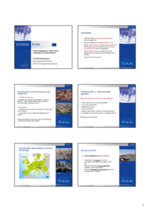Promotion of electronic public transport tariff system
Summary
To make the ticketing system in Zagreb more efficient, the city introduced an electronic public transport ticketing system, as well as defined an appropriate model for joint public transportation that is well accepted among users.
Implementing sustainable mobility
Currently a joint tariff system exists within the City of Zagreb, whereas within the counties a number of individual operators provide services on numerous lines and with autonomous tariffs. This type of unified ticketing was introduced by HZ INFRA and ZET to enable travel with a single ticket for daily travellers from towns along the part of railway that is already included in the public transport system. However, many bus service providers were not included. A study on the comprehensive tariff union for the City of Zagreb, and Counties of Zagreb and Krapina-Zagorje proposes the establishment of a suitable model of joint public transportation and an appropriate tariff union.
Progress
The new electronic public transport tariff system implementation in ZET and activities on establishing an integrated transport system, including the tariff union among public transport operators in Zagreb and the two neighbouring counties in the Zagreb region is continuing. The marketing and information campaign were developed, while the harmonisation of ticketing and vehicle equipment is progressed well. A new improved version of the software has been installed.
As part of the integrated public transport process there was communication between the three regional authorities, who discussed the integrated public transport agreement and how the project can be financed. ZFOT also conducted a survey about the Quality of Service in Public Transport. The survey contained more than 40 questions and over 50 sub questions about every aspect of the public transport service and several questions regarding tariff system and prices were listed. The mobility centre opened in June 2010.
Outcomes
- New electronic ticketing system was successfully implemented.
- The number of sold prepaid tickets increased by 19.6% from 2009 to 2011; the number of sold e-purse tickets increased by 10.82%. The frequency of charging e-purse tickets increased by 88% (if the figures from 2011 are compared with the ones from 2010).
- The share of very satisfied users (highest grade in the quality of PT survey) by the sub-criterion Are you satisfied with the possibility to purchase “right ticket for right destination” increased from 20.98% in 2009 to 24.44% in 2011; the proportion of very satisfied users by the sub-criterion Are you satisfied with the availability of information about the ticket prices increased from 7.56% in 2009 to 13.22% in 2011; in total 85.33% of respondents expressed some form of satisfaction with the sales network.
- The marketing and communication campaign conducted.
- The regional authorities signed the agreement (contract) about cooperation on ITS.
- The regional authorities signed the contract for financing and tendering the first phase of IPP project what means two projects for ITS: ITS transport organisation project and ITS common tariff project.
- Increase of confidence towards public transport and commuters’ satisfaction with integrated service.








